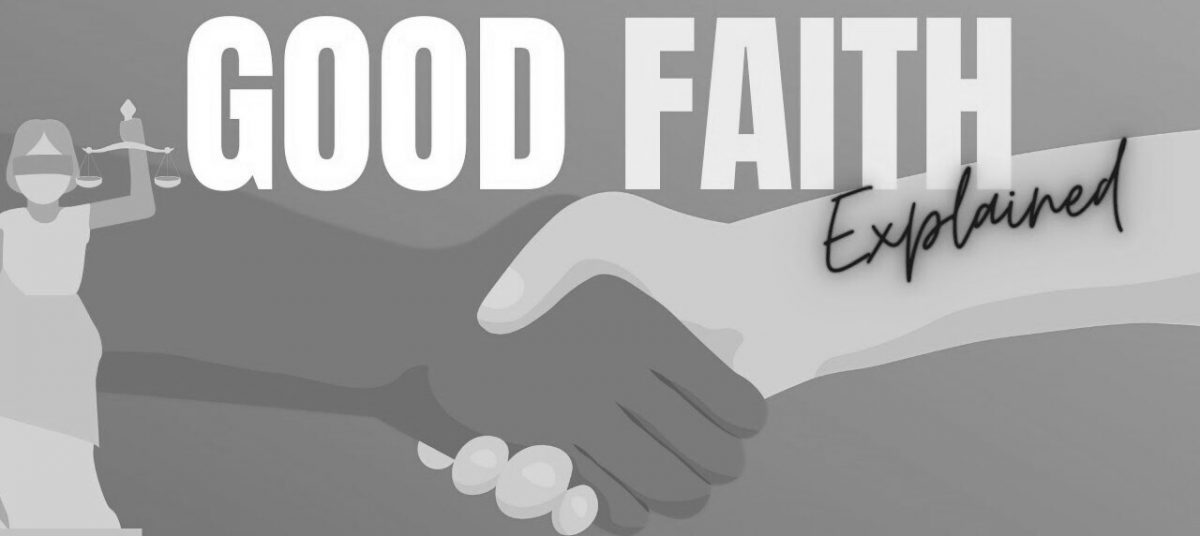Introduction
In our decision-making processes, we often rely on mental models that help guide our choices. One such influential mental model is Good Faith. Anchored in human psychology, the Good Faith model emphasizes trust, sincerity, and the belief that others will act in a fair and honest manner. Understanding this mental model is crucial as it profoundly affects our day-to-day decision-making, enabling us to navigate personal life decisions, business scenarios, and public policy-making with a sense of trust and cooperation. In this blog post, we will explore the concept of Good Faith, its relevance in decision-making, its prevalence in various contexts, the biases associated with it, strategies to avoid its pitfalls, and the value of actively recognizing and avoiding this mental trap.
Defining Good Faith and Its Relevance
The Good Faith mental model refers to the belief that others will act honestly, fairly, and with positive intentions. It involves trust in the integrity and goodwill of individuals or organizations when making decisions that rely on cooperation and collaboration. Good Faith is relevant in decision-making processes as it encourages a positive and cooperative mindset, enabling mutually beneficial outcomes, fostering stronger relationships, and building trust among individuals and communities.
Occurrences of the Good Faith Bias in Various Contexts
Personal Life Decisions: In personal life decisions, individuals may fall prey to the Good Faith bias when they assume that others will act in their best interests. For example, someone may blindly trust a friend or partner without critically evaluating their actions or intentions. By placing unwavering faith in others, individuals can make irrational decisions that are contrary to their own well-being, neglecting to consider potential risks or hidden motives.
Business Scenarios: The Good Faith bias can manifest in business scenarios when individuals or organizations trust partners, employees, or clients without conducting due diligence or implementing appropriate safeguards. This blind trust can lead to detrimental outcomes, such as financial loss, intellectual property theft, or reputational damage. By assuming the good intentions of others without verifying their credibility, businesses can make decisions that harm their own interests.
Public Policy-Making: The Good Faith bias can influence public policy-making when decision-makers assume that all stakeholders will act in the best interests of the public. This can lead to ineffective or inadequate policies that fail to address underlying issues or adequately protect the rights of individuals. By relying solely on trust and goodwill without considering potential conflicts of interest or hidden agendas, policymakers may make decisions that are contrary to the collective best interests.
Mental Biases and Psychological Underpinnings
The Good Faith bias is influenced by various cognitive biases and psychological factors:
Optimism Bias: The tendency to believe that positive outcomes are more likely to occur than negative ones. This bias can lead individuals to assume that others will act in good faith, underestimating potential risks or conflicts of interest.
Confirmation Bias: The inclination to seek and interpret information in a way that confirms pre-existing beliefs or expectations. The Good Faith bias can be reinforced by selectively focusing on evidence that supports the positive intentions of others while ignoring potential warning signs.
Trust-Trustee Effect: The tendency to trust others based on certain characteristics or attributes associated with trustworthiness. Individuals may fall into the trap of assuming trustworthiness based on external factors such as appearance, status, or reputation, without considering the specific context or individual actions.
Strategies to Identify and Avoid the Good Faith Bias
To avoid succumbing to the Good Faith bias and promote more objective decision-making, consider the following strategies:
Verify and Validate: Engage in critical thinking and due diligence when evaluating the intentions and actions of others. Seek evidence, gather information from multiple sources, and verify claims before placing complete trust in individuals or organizations.
Consider Incentives and Motivations: Recognize that individuals may have diverse motivations, and their actions may be influenced by self-interest or hidden agendas. Consider the incentives and potential conflicts of interest that may impact the trustworthiness of others.
Balance Trust and Skepticism: Adopt a balanced approach that combines trust and skepticism. While trust is essential for collaboration and positive relationships, maintaining a healthy level of skepticism allows for a more realistic assessment of potential risks and helps avoid blind trust.
Foster Open Communication: Encourage open and transparent communication to build trust based on mutual understanding and respect. Establishing clear expectations and effective channels for feedback and dialogue can help uncover potential issues and build stronger relationships.
Conclusion
The Good Faith mental model plays a significant role in decision-making processes, shaping our perceptions of trust, cooperation, and sincerity. While trust is essential for fostering positive relationships and collaborative outcomes, blindly assuming the good intentions of others without critical evaluation can lead to irrational decisions contrary to our best interests. By recognizing the biases and psychological underpinnings associated with the Good Faith bias, we can adopt a more balanced approach to decision-making, considering evidence, incentives, and potential conflicts of interest. Implementing strategies such as verification, critical thinking, and open communication allows us to navigate decisions more objectively while maintaining a sense of trust and cooperation. By actively avoiding the pitfalls of the Good Faith mental trap, we can make informed choices that serve our best interests and promote positive outcomes for ourselves, organizations, and society as a whole.
